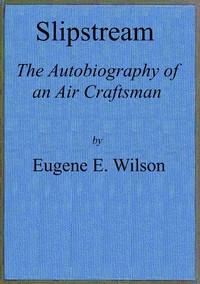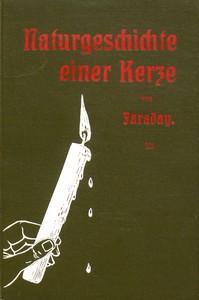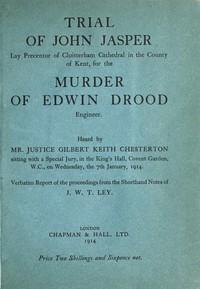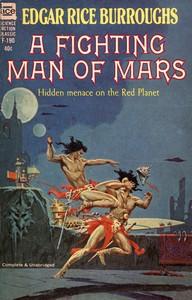|
|
Read this ebook for free! No credit card needed, absolutely nothing to pay.Words: 93745 in 38 pages
This is an ebook sharing website. You can read the uploaded ebooks for free here. No credit cards needed, nothing to pay. If you want to own a digital copy of the ebook, or want to read offline with your favorite ebook-reader, then you can choose to buy and download the ebook.

: Slipstream: the autobiography of an air craftsman by Wilson Eugene E - Wilson Eugene E. 1887-1974; United States. Navy Aviation; Aircraft industry United States Biography@FreeBooksThu 08 Jun, 2023 rsair, we now had a brilliant two-seater that compared favorably in performance with the hottest fighters, and thus gave us a stable with which to make an assault on all the world's records in their classes. The admiral, a highly competitive spirit with a keen appreciation of the value of world's records and racing competition, now made participation in these events a major Bureau project. The names "Wasp" and "Corsair" had been selected by the Engine Section, in response to requests from Pratt and Whitney and Chance Vought. Little did we know at the time what distinction they would one day attain. The Wright Apache focused attention of other manufacturers on the characteristics of the Wasp; and Boeing, after testing an engine in a converted FB-1 fighter, immediately put a new one in the works to be called the "F2B." Curtiss made a conversion of one of its single-seater Hawks, replacing the D-12 with a Wasp. The first Wasp engine to be flight tested was flown in a Curtiss Hawk and thus became a sort of monument to the reluctance Curtiss had shown by their failure to develop their own R-1454 engine. It also nearly became a monument to the failure of the Pratt and Whitney Wasp. For on the one-hour endurance test over Long Island, Temple Joyce, then test pilot for Curtiss and one of the best-known figures in aviation, grew tired of the monotony of cruising back and forth and decided to vary the routine with some acrobatics. But when he pulled back the stick and booted the rudder to do a nice snap roll, something snapped in the Wasp and Temp had to make a forced landing on the Curtiss field. The competitive Wasp in a competitor's airplane had gone sour on its test flight! Consternation reigned in the Engine Section--matter of fact, it really poured. Examination disclosed that the crankshaft counterweight had sailed out through the crankcase. Now the cheek had been designed with ample margins for the stresses of centrifugal force, and the failure remained a mystery until I recalled a lesson learned as a student in the Sperry Gyro Compass School several years earlier. No one had anticipated the effect of gyroscopic forces like those set up in a snap roll. Now George Mead took these in hand and strengthened the shaft to withstand them. With this change, the Pratt and Whitney Wasp came to stay. One day George and I, feeling happy about this, decided to take a walk through the Smithsonian Institution museum. And there we saw something that cut us back to size. It was the Manly engine, one designed by Charles M. Manly, the pilot and engineer of the Langley airplane, the craft Professor Langley had tried to fly off a catapult years earlier. And marvel of marvels, it was a five-cylinder, single-row, air-cooled radial that antedated the original Wright engine and all the other liquid-cooled in-line engines that had followed it. Charles Manly, having no prior art to befuddle him, had reasoned out the rational form for an aircraft engine and created one forthwith. As we stood looking at the museum piece that included the fundamentals we had used to obsolete years of automotive practice, George grinned sheepishly and remarked, "It all goes to show that every time you think you have discovered America, you find that Columbus was here back in 1492." With the completion of many flight tests, the Wasp was now ready for production. But Rentschler found himself in a quandary as to what price he should ask for the engines in quantity. He had no experienced costs, for no engine had yet been built in production. We had asked for six engines on the first experimental order and Kraus had paid Pratt and Whitney the ,000 he had set aside for them. It was estimated that this amount covered about half of the experimental costs, and Kraus was willing to add the remainder to the first production order so as to write off this expense. But no one knew nor had any way of guessing what the unit price should be for the order of some two hundred engines now required for Vought Corsairs and Boeing and Curtiss fighters. And so the price was fixed by that which Kraus had previously paid for a similar number of Packard 1500's--a liquid-cooled engine we had earlier prescribed to replace the Curtiss D-12's in the Boeing FB-5's. For while we had promoted the air-cooled vigorously we had likewise developed the 500-hp Packard as a successor to the 400-hp Curtiss D-12. Rentschler was not too happy about having the price for his air-cooled engines fixed by that of another contractor for liquid-cooled; he insisted there was no relationship between the two. But in government business, price may be fixed by anything else but merit. The ever-present threat of a Congressional investigation made it impossible to write into the Pratt and Whitney contract any figure higher than the Packard price even though the circumstances might be entirely different. This was but one of the things that made it hard to interest private manufacturers in risking either their equities or their engineering talent in a government speculation; none of the business fundamentals with which they were accustomed to measure their risks applied here. However, as it turned out, an unexpected event exercised such an influence that Pratt and Whitney not only did not lose money on the first contract but even made an embarrassingly high profit. It all started the morning William E. Boeing, of Seattle--not "Addison Sims"--arrived in the Engine Section. Bill Boeing, founder of the Boeing Airplane Company, and a successful operator in lumber and real estate, had drawn his airplane-company staff from versatile young graduates of the aeronautical-engineering course of the University of Washington and had picked some good ones. Foremost among these were Claire Egtvedt, his chief engineer, and Phil Johnson, his factory manager. Bill, a pilot himself, had opened an air line between Seattle and Victoria, using a couple of Boeing-built flying boats under the management of Eddie Hubbard. Eddie had persuaded Bill, against the advice of Phil Johnson, to enter a bid for the new Chicago-San Francisco contract air-mail route, and Bill had won the competition with a bid considered absurdly low by his competitors. This was a matter on which the admiral had already set Bureau policy. Having in mind the fact that if government and commercial business could be lumped, the increased volume could bring reduced costs for both, he had issued instructions to cooperate with commercial operators wherever practicable. All Bill needed was a letter of introduction to F. B. Rentschler. Out of this episode grew the Boeing Air Transport Company's profitable operation, the ultimate consolidation of Boeing and Pratt and Whitney, to form the nucleus for the United Aircraft and Transport Corporation, and such a profit for Pratt and Whitney on the first order that Rentschler finally came to the Engine Section for advice as to what should be done with the profit. Not the least important factor in this achievement was the breathtaking daring which Rentschler showed in tooling up his shop before the engine had passed its tests and before he had received the contract. This intelligent risk paid such dividends that Rentschler later agreed with Kraus to return what might have been called "excess profits," and in so doing thus established a principle of voluntary profit control that finally became the established policy of the company. The original suggestion for this came from the Engine Section. One of the SC's, equipped with a standard propeller made of laminated woods glued together and finished to form, had let go on take-off at Hampton Roads and the engine had nearly jumped out of the plane. In response to an excited call from Norfolk, I had flown down in company with Charles J. McCarthy, then our stress expert, to see what could be done. Fortunately, about this time the Army Engineering Division at McCook Field had brought along an experimental development, under the supervision of Frank Caldwell, in which a new aluminum alloy called "duralumin" had been introduced as a substitute for wood. So far it had not been fully proved in service but we were in such a right spot that I now authorized the procurement of the first production order for 100 of them. Free books android app tbrJar TBR JAR Read Free books online gutenberg More posts by @FreeBooks
: Rajah Brooke by St John Spenser Sir - James Rajah of Sarawak 1803-1868; Sarawak (Malaysia) History; Sarawak (Malaysia) Kings and rulers Biography@FreeBooksThu 08 Jun, 2023

: Naturgeschichte einer Kerze by Faraday Michael Meyer Richard E Editor - Faraday Michael 1791-1867; Chemistry; Candles@FreeBooksThu 08 Jun, 2023
|
Terms of Use Stock Market News! © gutenberg.org.in2025 All Rights reserved.






